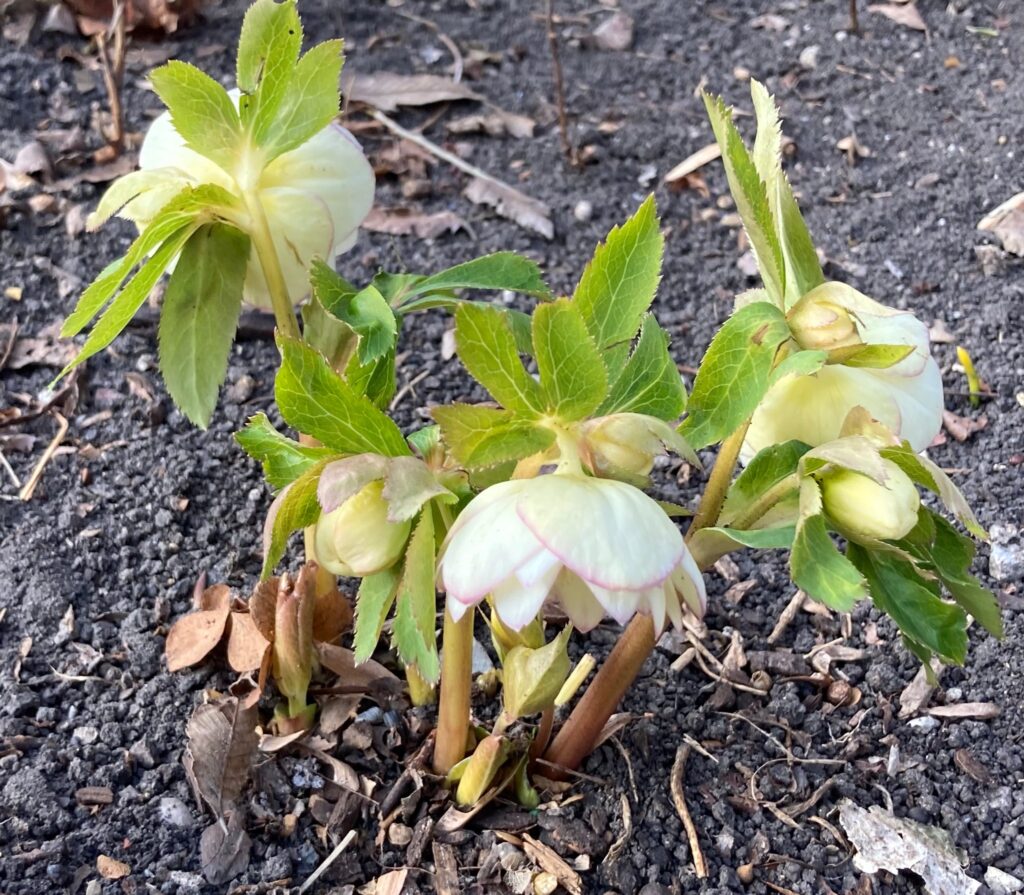I know for many people, their garden doesn’t really wake up until mid-April, but I am too impatient to wait for that. If you’re dying for flowers as early as possible, snowdrops and hellebores are your friends.
Part of what is so great about both is for people who have heavy shade and have a hard time getting much in the way of blooms later in the year — snowdrops bloom early enough that the trees haven’t leafed out yet (similar to other early spring bulbs), so you can plant them in areas that will be shady later. And hellebores are shade-tolerant, so tend to bloom before the trees leaf out, but keep those blooms for a few months.
Plant snowdrops as bulbs in the fall — they’re tiny, and are particularly charming near walkways, the sidewalk, either in garden beds or in the grass. Galanthus nivalis is the standard snowdrop — if you get obsessive about them (and become a ‘galanthophile’), there are many other varieties, some of which can get kind of shockingly expensive.
I’m not sure I quite get that, given that you need to bend down to the ground to appreciate the details of the rarer varieties, but to each their own! (You can always force them in a pot to have indoors to make it easier to appreciate the details…)
Once they get established (a few years), snowdrops will slowly spread in our area — once they become a thick clump, the best way to help them spread is to dig up the clump while they’re still ‘in the green,’ as Monty Don says, gently separate them, and replant in a few different places.
Hellebores, the first perennials to bloom, are mostly still sleeping around here, but one of mine gets a lot of sun and has started to bloom (the rest are mostly still buds). They’re somewhat expensive as perennials go (usually around $25-$30), and it’s rare to see them as giveaways, because it’s about five years before they’re big enough to divide.
But if you do love them, and want a variety, investing in one or two will mean that in a few years, you’ll be able to divide yours and then trade with other hellebore-lovers. Usually you buy and plant them in early spring, as soon as the soil can be worked.
Most traditional hellebores are subtle, with nodding flowers, so people sometimes cut the blooms and float them in water so you can really appreciate the details. Newer varieties sometimes have more upturned flowers.
In that last photo, you can see some of my hellebores and snowdrops, under a big redbud tree that casts a lot of shade. I’d like to have 2-3 times as many of both under there. Eventually. ![]()




